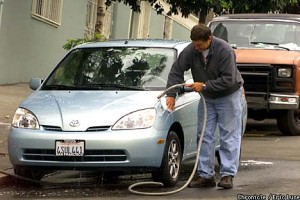If you have shopped at Ikea, you will notice that periodically you come across an escape hatch. You can stroll through the departments (which is what Ikea would like you to do because random browsing causes you to purchase additional merchandise) but if you get bored you can just duck through one of the little side doorways into a completely different department.
Good software user design includes an escape hatch as well. A good example is the TurboTax desktop product, which gives you an always-accessible choice of “Forms” or “EasyStep” so you can look at your current information in the way that makes most sense for you.
But I’m using TurboTax Online for the first time, and they don’t do that. The ONLY way to navigate is to follow the prompts on the screen, and if the prompts don’t work and you ask for help then Intuit twists itself into contortions trying to answer your question. (I’m talking about the in-program help, not the too-broad User Community sidebar.)
So, I want to import the return created with TurboTax Desktop 2009. I find a help screen with instructions which I’ll paste below (and cut out some info that is not pertinent):
Transfer Last Year’s Tax Info from Desktop to Online
Updated: 11/29/2010 Article ID: GEN12156
Below is the procedure for transferring (or uploading) a tax return created in 2009 TurboTax Desktop software to TurboTax Online 2010.
Follow these steps to transfer:
1. Sign in to TurboTax Online (or click the Create an Account or Try It First buttons).
2. Once you’re in TurboTax Online, click the Home tab and then select the first link in the lower half of the screen, titled Transfer last year’s TurboTax return from your computer.*
3. On the Transfer Last Year’s TurboTax Return screen, click Browse, and then select your 2009 tax data file. (Find last year’s tax file on Windows or Macintosh)
4. Click Transfer Return.
5. Once you see the message Transfer Complete, click Continue to start your 2010 return.
I assume you didn’t read all that, but I had to. I started from the top and followed the instructions to clear my 2010 return that I had started by accident. I looked for the link which they told me very clearly would be “Transfer last year’s return from your computer” but I saw no such link; instead I saw “we can help you transfer last year’s computer return from your computer”. Clicking that just resets the page I just reset, taking me nowhere.
Finally I notice the asterisk, and track down to the footnote at the bottom. It tells me:
* If you don’t see the Transfer last year’s TurboTax return link, it’s because you:
• Previously entered information in your 2010 TurboTax Online return; or
• Already transferred your 2009 data, either by uploading last year’s tax data file or by signing in with your 2009 TurboTax Online login.
Unless you signed in using your 2009 TurboTax Online login, you can click the Clear your 2010 return and start over link on the Home tab, and then resume at Step 2 above. Clearing your return removes all tax data from your return, so make sure you really want to do this.
However, if you signed in using your 2009 login, clearing your return automatically re-transfers your 2009 online data, making it impossible to transfer your desktop tax file. The only solution in this case is to create a new account in TurboTax Online 2010 so you can start with a clear return. [underlining mine.]
Again, I assume you didn’t read that so here is what is going on. IF you created a login last year, THEN you can’t transfer in a desktop return because TurboTax assumes you already have a return online. But I don’t because I created the return with their desktop product, then created a login for e-filing. It’s a Catch-22 which Intuit recognizes, hence their outrageous solution that I have to forget my old username and password and start anew.
This should never have seen the light of day. Whereas most companies urge you to set up an account and save your user name for a better experience, Intuit tells me the only option to get out of this problem is to forget I have a user name and start over with a brand new account. Boo, hiss. That’s what the lack of an escape hatch will do to you.


